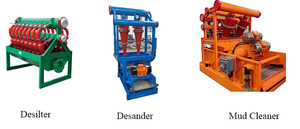(40 products available)











































































































































































































Dense medium cyclones are classified based on the shape of the cyclone body and the diameter of the cyclone. The following are the common types of dense medium cyclones:
Specification
Maintenance
The dense medium cyclone is an important separation device in the mining, coal washing, electric power, and other industries. The usage scenarios of dense medium cyclone are as follows:
In the mineral processing industry, the dense medium cyclone is often used to separate valuable minerals from gangue minerals. During the mineral separation process, the dense medium cyclone first separates the raw material into two distinct products: one with a high mineral content (product) and the other with a low mineral content (reject or tailings). The device is commonly used in diamond, iron ore, and coal beneficiation plants, among others.
The dense medium cyclone can be used to pre-concentrate valuable minerals in ore before further processing steps, such as grinding, flotation, and dewatering. Pre-concentration can help reduce the overall energy consumption in a mineral processing plant by targeting the high-value mineral components early in the process.
In the coal mining industry, the dense medium cyclone is also used to reduce the ash content of coal, a process known as de-sliming. De-sliming removes ultra-fine particles of gangue minerals from the coal to improve its quality and calorific value. In addition, dense medium cyclones can be used for dewatering applications. The device separates water from mineral products, reducing the moisture content of final coal products to meet market requirements.
In the coal preparation plant, dense medium cyclones are commonly used to process raw coal before it is sent to end-users. The device can help to effectively separate coal from impurities, thereby improving the calorific value, ash content, and other important parameters of the coal, ensuring that it meets the quality standards for use in power generation and other industries.
When choosing a dense medium cyclone, several factors need to be considered to ensure the right fit for the specific needs and applications.
It is important to clarify the purpose and use of the dense medium cyclone. For example, mineral processing requires the separation of different ore materials, and coal preparation requires the separation of coal and impurities. Knowing the specific needs of an application can help determine the required particle size separation, processing capacity, separation efficiency, and other performance parameters.
There are different types and models of dense medium cyclones. Business buyers should choose the right one according to the requirements of the application. In the meantime, they should also pay attention to the specifications and parameters of the dense medium cyclone to ensure that they meet the required particle size separation, processing capacity, and separation efficiency.
Business buyers should carefully evaluate the quality and performance of dense medium cyclones. They should select models from well-known brands and reliable suppliers, and they should also ensure that the equipment is of high quality and can achieve stable and reliable performance. In the meantime, they can also pay attention to whether the dense medium cyclone has obtained relevant quality certification.
Business buyers should consider the cost of the dense medium cyclone, including the equipment purchase cost, installation and commissioning costs, and subsequent maintenance and energy consumption costs. They should choose equipment that offers the best value for their specific needs, considering both performance and cost.
Business buyers should choose suppliers with good after-sales service and support. They can provide support for equipment installation and commissioning, technical training, maintenance services, etc. They can also ensure rapid response and timely technical support in case of equipment problems.
Q1 What is a dense medium cyclone used for?
A1: The dense medium cyclone is used to remove impurities from coal, minerals, etc., to increase the purity of the product.
Q2: What are the benefits of using a dense medium cyclone in mineral processing?
A2: The dense medium cyclone can separate ore based on density and particle size, realizing efficient separation.
Q3: How does a dense medium cyclone work?
A3: The dense medium cyclone is operated using a suspension of solids in water. The separation process is based on the different densities of materials.
Q4: What is the difference between a dense medium cyclone and a dense medium separator?
A4: A dense medium cyclone is a device used in mineral processing that makes use of a medium that is denser than the particles being treated to separate them. A dense medium separator is a device that makes use of a medium that is denser than the particles being treated to separate them and has a similar working principle to a cyclone.